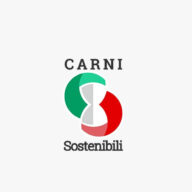
Antibiotics and the phenomenon of antimicrobial resistance
Antibiotics (from ancient Greek: anti, “against” and bios, “life”) are chemical substances that kill bacteria or inhibit their growth. They belong to the broader group of antimicrobial compounds, used to treat infections caused by microorganisms, including fungi and protozoa. When however the use of these drugs is excessive or uncontrolled, they are likely to trigger phenomena of antimicrobial resistance.
In the veterinary field, since the 50s, they represent a fundamental means for the control of infectious diseases, thus contributing to the improvement of animal welfare and the safety of food products of animal origin. The advantages of using antibiotics are innumerable, even to human medicine, and many bacterial infections, that up to 50 years ago could kill a person, such as pneumonia, are no longer a danger.
The development of resistance is in itself a normal evolutionary process, a result of genetic evolution which applies to microorganisms: with an excessive and inappropriate use of antibiotics, however, the resistance phenomenon accelerates the natural tendency of microorganisms to “defend” the active ingredients contained in drugs. The “resistant” bacteria, although harmless, move from one organism to another transmitting the resistance to a pathogenic organism of the new host.
Since the 90s, the phenomenon has become increasingly widespread, to the point that in the first Global Report on antimicrobial resistance published by WHO in April 2014, the antibiotic resistance is identified as a “serious and potential threat to public health”. The development of resistant strains of bacteria makes it difficult to treat an increasingly wide range of infections quite common and easy to contract, with the result that even the most common and easy to cure diseases may potentially constitute serious risks to health.
To reduce this danger, in 2006, the European Commission has banned the use of antibiotics in livestock for non-therapeutic purposes (i.e. as growth promoters) and has recently drafted guidelines for their proper use. Assuming that resorting to veterinary drugs is a prerequisite for animal welfare, their use must therefore be complementary to a good barn management practice and appropriate vaccination programs, making it possible to maintain the state of health of the animals and minimise the conditions that favour the emergence of diseases.
The antibiotic-resistance issue is also at the centre of many information campaigns for consumers by the various governments and the WHO itself, as well as the subject of institutional strategies aimed at the promotion of the appropriate use of antimicrobial drugs protocols.
The Sustainable Meat Project





